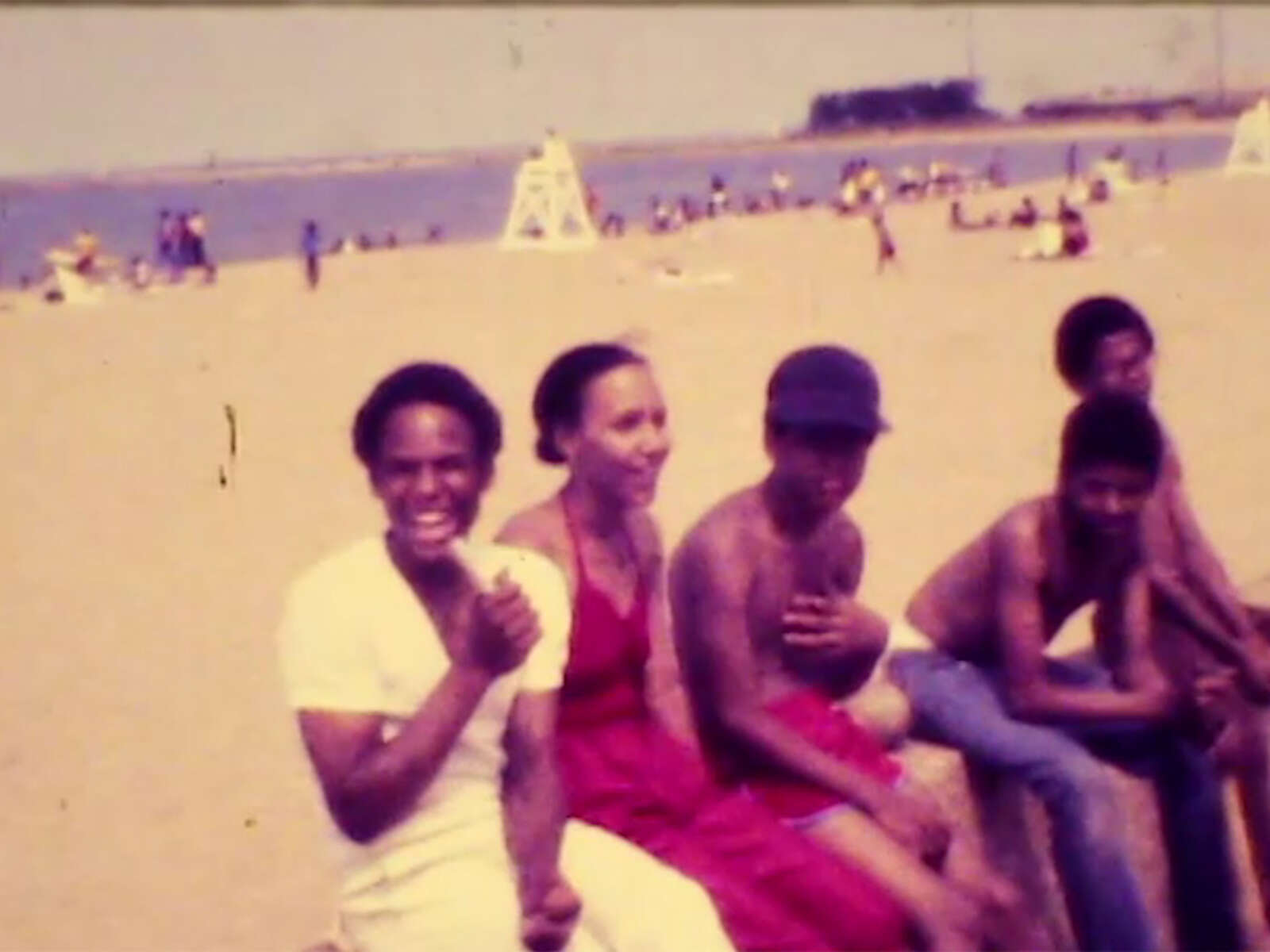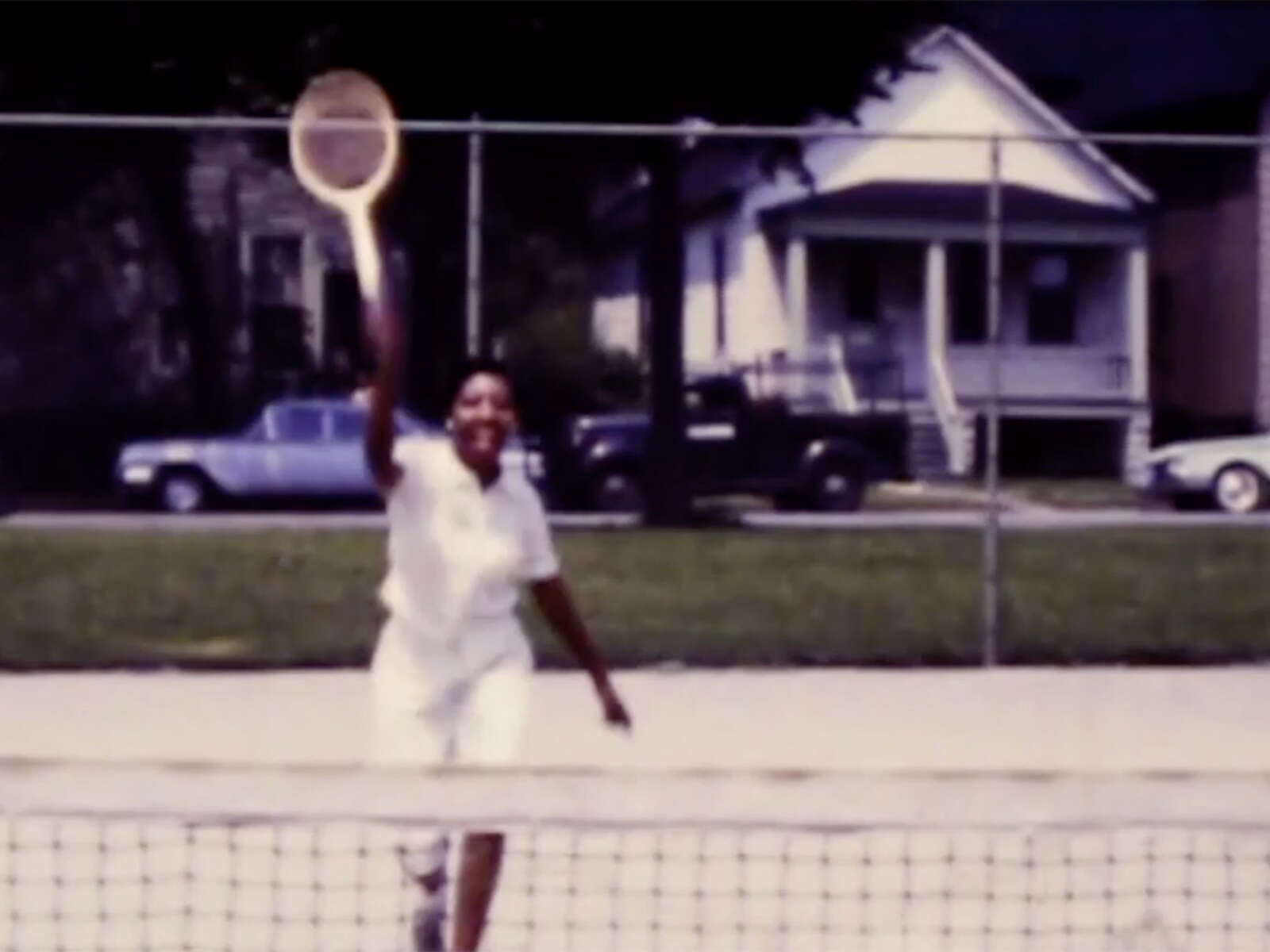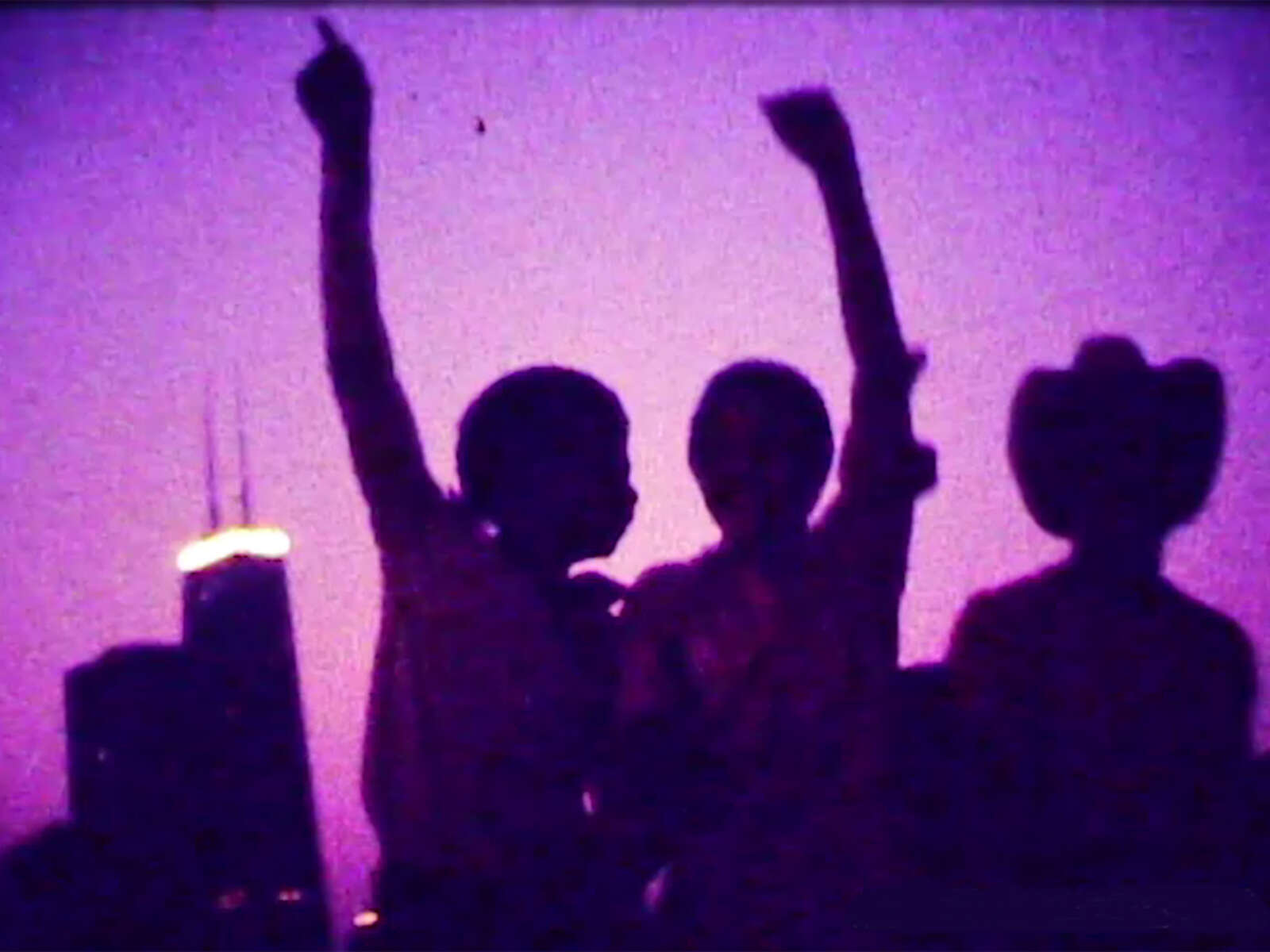Golden memories for SSHMP’s 20th anniversary
Written by Kat Sachs on
07.09.2025
for Read on Chicago Reader Website
When I spoke with University of Chicago cinema and media studies professor Jacqueline Stewart—also the former director and president of the Academy Museum of Motion Pictures and host of Silent Sunday Nights on Turner Classic Movies—about the South Side Home Movie Project (SSHMP), I asked her if there was anything amid the extensive collection of footage that’s stayed with her over the years. Stewart founded the venerable organization in 2005, thus making this year its 20th anniversary.
“One of my favorite clips in our collection is [of a woman named] Jean Patton showing off her kitchen,” she tells me. “The new appliances, all-gold refrigerator, gold sink, gold bread box. And she’s wearing these gold lamé pants as she walks around and plays solitaire at her gold table. To me, it really encapsulates that pride in one’s home, of domestic space as a creative space. . . . We just don’t get that level of detail, I don’t think, in other kinds of film or other kinds of stories about life on the south side of Chicago.”
This, in a nutshell, is why the SSHMP continues to be an important endeavor, as it not only preserves—to the tune of more than 1,200 reels of small-gauge film shot by south siders from the 1930s to the 1980s—but also seeks to promulgate these aspects of Black life, both in general and specifically on the south side of Chicago, which is often either woefully overlooked or egregiously misrepresented. In celebration of the organization’s milestone anniversary, a multimedia exhibition entitled “The Act of Recording Is an Act of Love” will be on view at the Reva and David Logan Center for the Arts from July 11 through August 24.
I spoke with Stewart over the phone about the history of the SSHMP, the lives of Black Chicagoans, community-based archiving, and the new exhibition.
“The Act of Recording Is an Act of Love: The South Side Home Movie Project”
Fri 7/11–Sun 8/24: Tue–Sun 9 AM–9 PM, Reva and David Logan Center for the Arts, 915 E. 60th, free
This interview has been edited for length and clarity.
Kat Sachs: Can you tell me about the founding of the South Side Home Movie Project? I also read that you founded it after studying orphan films and, in addition to that history of how the SSHMP came to be, I’m curious what struck you most about the absence of Black south-side home movies and official archives?
Jacqueline Stewart: I became interested in home movies as a new area for scholarly study. You know, there’s so many different types of films that film historians had not really looked at. Film critics are really focusing on narrative films, commercial films, feature-length films. But I learned that there was this vast body—actually a larger body—of material that really needed to be understood if we wanted to grasp the significance of the moving image in our society and in our cultural history. I am from the south side of Chicago. I grew up in Hyde Park and spent a lot of time with my family at my grandparents’ houses in Princeton Park and in Chatham. And I have always been really curious about the history of south-side neighborhoods. I suppose I’ve always been frustrated, too, by the way that the south side has been represented in mainstream media and journalism as this place of danger and dysfunction, when I know from my personal experience that’s not true. So all of those interests, both my personal connections to the south side but also my scholarly interests, just really came together through this lens of home movies.
It’s interesting that you were looking to fill both this void in terms of the archive but also for yourself.
Some of it also was just about getting validation in a way. I mean, I know I used to obsess over my family’s photo albums. We would look at those on a Saturday night with my grandmother, and you would see these still images of my mom when she was younger and see my cousins before I knew them, relatives who had passed away before I was born. And one of the things that I’ve learned in working with home movie material is that it can activate some of the same kinds of, you know, nostalgia and storytelling that still images can create, but they also just add this additional layer of meaning because they’re moving images. One of the things that we’ve always done with the SSHMP is we digitize the footage. And very often families who have donated this material, they haven’t seen these films in a really long time, because even if they have saved the films, they didn’t necessarily save the projectors or know how to use them, if they still function. So they’re seeing these moving images of relatives, and there’s a qualitatively different experience seeing a still photograph of your grandmother or seeing your grandmother walking around, cooking, smiling. And it can be very emotional for people. So we always take the time to first show this footage to the donors before we then open it up to all of the different viewers and artists and students that we also hope will value and study this material.
How has engaging those donors, through the collection and digitization, the oral histories and exhibitions, reshaped your understanding of community-based archiving?
Well, I guess I didn’t know a whole lot about community-based archives. But to my mind it was always like an archival project in the sense of materially preserving this body of films. So we store the original films in the University of Chicago’s film vaults for long-term safekeeping—climate-controlled, optimal conditions.
And then we have the digital archive, which is not just about ways of streaming the films on our website, which we do, but also digital preservation, all of the back end of ensuring that these digital files are being checked and refreshed so that they will last as well. There’s all the archival stuff, but to me, it was always about community dialogue and engagement and collaboration.
Building trust has been critical because the University of Chicago has had a really complex and, to the minds of many south siders, a negative relationship, [as] an agent of urban renewal, gentrification. How could we create a project where people would feel comfortable handing over these deeply personal, unique materials? Working with the donors has always been about being really transparent about how we handle this footage physically [and] intellectually, consistently inviting the donors to help us understand the footage, to provide context. So, performing these oral histories becomes a valuable family history for them as well, not just a research resource for us. And we are consistently inviting donors to participate in our programming and even help us shape the programming.
These films are largely silent, so their narration, let’s say, at public events, is really critical to understanding what’s going on. Where are you? And who are these people? “This is Aunt so-and-so,” “This was my graduation from UIC,” like they’re providing as they would have done when watching these movies at home. And there’s a lot of talking with this footage. We try to replicate a lot of that in our programming as well. So I guess as a community-focused archival project, what’s really key is that we don’t just think about taking material away from people and think we know better how to handle it, locking it up. Instead, collecting is the beginning of a relationship of deep dialogue between us and the donors, but also between the donors themselves—across sometimes, like, racial lines, which is amazing to see for sure—and with other people who are interested in looking at this really rare and beautiful footage.
Your project and this material resist dominant narratives about Black life in Chicago. I’m curious about the kind of experiences you’ve had and the joy, leisure, or nuance that has emerged that we might rarely see elsewhere.
You know, I think this is one of the things that people value so much about the project, especially African American viewers, is that it affirms family relationships. People often use terms like joy and intimacy when they look at this footage. And we have to remember that, unlike shooting video on our phones, or even shooting video with a camcorder . . . we’re talking about small-gauge films, 8 millimeter, Super 8 millimeter films, for the most part, that are on reels, that might be ten minutes long. So turning the camera on and off is a really conscious decision.
People want to use this footage wisely. They paid for the reel, they’re going to mail it off, get it developed, and get it back. So there are these really concentrated performance styles, I guess you could say, in the footage, where people are showing themselves in their best light. You know, like when people are dressed up for Easter Sunday or for a birthday party or a wedding, they’re trying to get the highlights.
So in a way, these films are, given the nature of the format itself, highlights, moments of pleasure and joy, vacations, celebratory moments, milestone moments. And because of that, it turns out that this becomes an archive that really speaks against these narratives of dysfunction and criminality and joylessness that have too often been associated with Black life. I’m really grateful that so many documentary filmmakers, because they can’t find footage of, like, mid-20th-century Black life in most archives or traditional footage houses, they come to us for that kind of material. That’s been a wonderful way that these images have been shared more broadly.
What unique insights do you think home movies provide compared to commercial and narrative cinema?
One thing is that the moving image has permeated everyday life long before our phones. This is a practice that predates the digital technologies that we so often say, you know, democratized filmmaking. It’s definitely true that digital tools have made it possible for a broader group of people to make commercial films or, you know, to become professional filmmakers. But small-gauge cameras and putting up a screen in your basement are things that everyday people have been doing for a very long time.
And I think that that also just gives us a different way of understanding [of] who we call filmmakers. Then another thing that has been really fascinating for me has been to think about the aesthetics of small-gauge filmmaking. People, of course, are not always the greatest cinematographers, but in many cases, they’re trying to be. They’re trying to light these scenes in the right way and to pan and zoom.
There are some films that have these accidental double exposures or light leaks. And when you watch these films, you’re just super conscious of the person holding the camera and the placement of the camera. And, you know, we’ve seen that there are avant-garde filmmakers who pick up on some of these kinds of aesthetics. But I love to think about these films not just for the so-called content that they hold. Yes, we have Bud Billiken parades, we have footage of [former Emperor of Ethiopia] Haile Selassie’s first visit to Chicago—you know, historic moments, architecture of the past, the way people dressed, all these really valuable things that we might call the content. But the form of amateur filmmaking is super interesting.
I’d love to hear you talk about the labor involved in things like the processing, preserving, and cataloging of home movies, especially with these community-based materials.
I feel very fortunate to have been connected to an incredible community of moving image archivists who share their skills and their knowledge so freely because they’re committed not just to the specific archives they work in, but to film preservation overall. When I was starting this project, there was a group of archivists that started the Center for Home Movies and this initiative called Home Movie Day, that has now grown to sites all across the country, all around the world, where people bring in their footage and learn about how to preserve it themselves or to deposit it in an archive.
And I had to learn what was going to be involved in taking stewardship of these materials. I mean, when we get these reels, they’ve often been in boxes in a basement or attic or garage, you know, where they’ve been subject to a lot of temperature fluctuation. Especially here in Chicago. We get reels often that have shrunk so they can’t be run through a projector. We have to clean them, often fix splices. It’s really tedious work. I’m really grateful that not too long ago, we were able to purchase a scanner to scan the films to digital that doesn’t have perforations. It’s a sprocketless scanner, so that even when the footage is kind of curled or shrunken, we can still get frame-by-frame digital images . . . copies that we put together in the file that we have. We don’t do a ton of color correction because . . . I don’t see our role as trying to fix these films.
But where there’s damage that makes images hard to see, we can make some adjustments to try to capture the image better. We put all the films in new cans, vented cans, because they’re often in these cardboard boxes or metal cans that just accelerate their deterioration. We treat each film as precious. The films are unique.
It’s a reversal film process. So when people were loading their cameras, what they shot was what they would mail off to Kodak and then get mailed back. It wasn’t like there was a separate negative. Each of these reels is the actual physical thing that ran through the camera. That’s all the more reason why we try to do no harm and really document carefully every step of our preservation process.
Can you tell me about the exhibition, “The Act of Recording Is an Act of Love”?
The exhibition really will give people an overview of the project and demonstrate how deeply embedded it is in the community, that it’s a collaboration, and that it’s all about interaction with the archives. As you come in, you’ll learn about how we put out the word back in 2005—flyers that we put around in grocery stores and leaflets that we were passing out at the Billiken Parade, just inviting people to share their footage.
We’re going to have an area where we really walk people through the mechanics of physically collecting and cleaning and digitizing the material and caring for this stuff in a way that will enable it to last in perpetuity. There’ll be an area that highlights one of our most important activities, which is something we call community cataloging, where we invite people to actually tag the footage. Like, what are your memories? Can you help us identify some of these locations or moments, and what are the memories that they evoke for you? That’s something that people can do when they register with the project on our website, and we’ll have some stations where people can do that kind of community cataloging in the gallery.
Then we’re going to have an area that displays a lot of the creative reuse projects that people have done over the years . . . [and] we’ll have a little station where people can choose images and music and put together their own remix of south-side home movies.
We’re going to have a screening room where, every day, a different family’s films will be running through the run of the exhibition. So when you come, you might see members of the family there talking about the films that are showing.








